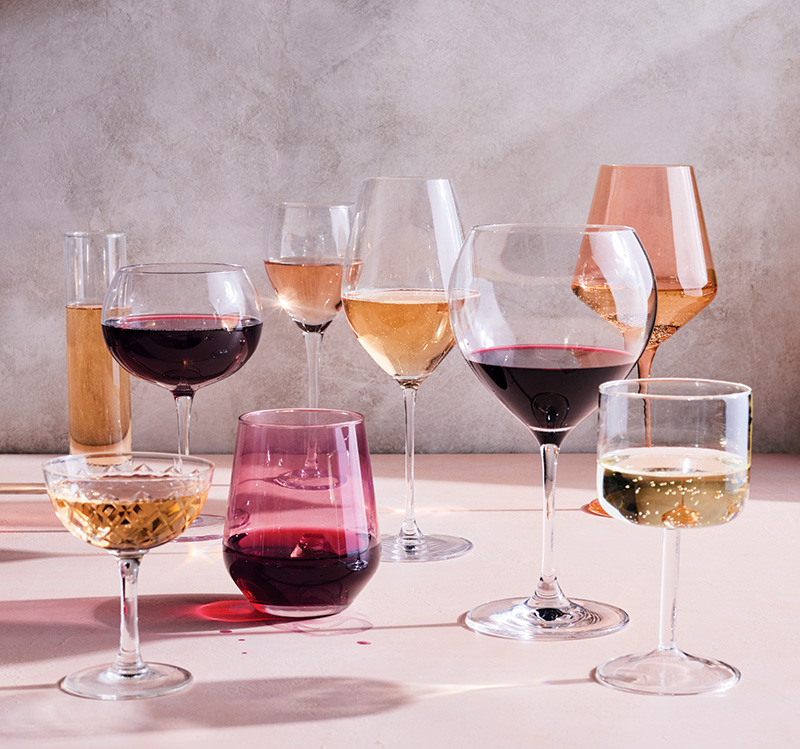7 Ways to Increase Wine Sales in Your Restaurant
A two top arrives ready to take in the full experience of the restaurant. Menus in hand, they peruse dinner options and eagerly inquire about the wine list. They look it over, sigh and stick with cocktails. What happened?
Nothing inspired them to order wine, and no one was around or trained to suggest anything. And that’s a missed financial opportunity.

“No matter what you do, if you focus on the wine program, you will see an increase in sales,” says Richard Hanauer, wine director and partner of Chicago-based RPM Restaurants.
As a part of Lettuce Entertain You Enterprises sommelier team since 2008, Hanauer has worked in all types of restaurants, selecting bottles from every price point. He knows what works and what doesn’t, and says that with a little effort, from wine selection to training staff, any restaurant can create profit-making opportunities via a well-curated wine list. Here are a few of his tips to wake up a wine list.
1. It Starts at Stemware
Wine is too often served in inappropriate stemware and at the wrong temperature, says Hanauer. It can be a big investment to ensure proper glasses for whites and reds, glass decanters for bottles that need it, and that bottles are properly chilled and stored. But that attention to detail goes a long way.
“You want guests who order wine to feel like they’re getting their money’s worth,” he says. “Proper glasses and a good mise en place for wine service is a good starting point.”
2. Train Your Staff

“You can’t operate or sell a product if you’re unfamiliar with it,” says Hanauer. If a designated sommelier doesn’t exist, delegate responsibility to someone who’s willing to learn, or has knowledge on pairing selections with the menu and can share that knowledge with the staff.
If that’s a budget stretch, lean on sales reps, the distributor or even the winemakers to train your staff.
“It’s simply about knowing how each bottle fits into your restaurant’s library of wines,” says Hanauer. “Wine can enhance the meal. If no one can confidently relay that to a guest, then it’s lost.”
3. Taking Stock

Perhaps the individual who’s taken on the role of learning more about wine can oversee inventory. This ensures someone is making sure vintages are correct, and that wines listed on the menu are available. Customers could easily be turned off if they sense the list is an afterthought, and it could cost more than just one sale. “No one will trust a restaurant if they’re told their first two wine picks aren’t available,” says Hanauer. “Proper inventory control costs zero dollars and makes an immediate improvement.”
4. Mix and Match Wine Cases
Cash-strapped restaurants can diversify their wine lists without breaking the bank by ordering customized cross-portfolio cases. Try your distributor and consider coveted wines like 13th Vineyard by CADE and Odette without doubling down on full cases from a single producer.
5. Stay True to Your Concept
The most obvious solution to dusting off a wine program is making sure it matches the cuisine. Even wine professionals like Hanauer know that not all restaurants require a wine list or full program.
“When you go to an Italian restaurant that serves a beautiful Bolognese, and they don’t have a Sangiovese to pair with that, that’s not hitting the mark. If you’re serving French food, have the right wines from the Rhone and Burgundy, not random wines but regionally-focused,” he adds.
6. Be Wary of Trends
Unless it’s the crux of your business plan, stray from overly promoting something new. “Fads are always popping up and dying down in our industry, but you still need to know what works for you,” says Hanauer.
For instance, just because natural wine is trending across the nation, it doesn’t mean it’s a fit for every restaurant. If it goes great with your menu, serve it. Just make sure someone is knowledgeable and that they and well-trained staff can deliver the proper messaging to the customer.
7. Broadcast Your Efforts
Let the world know what you’re doing. For Hanauer, social media is the best way to share new wines, wine-focused staffing, great food matches and specials.
“It’s almost frustrating to think about an operator losing their grip on a wine program,” says Hanauer. “It’s the easiest way to make money.”

